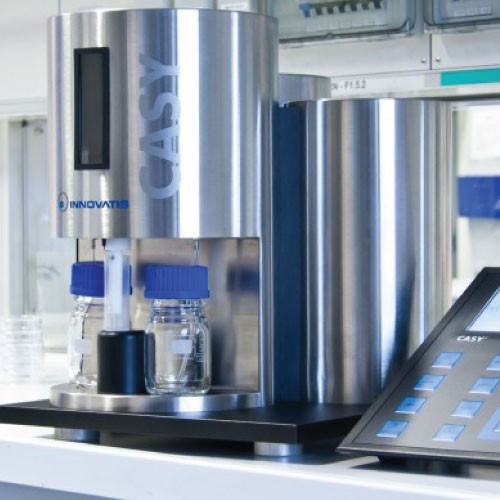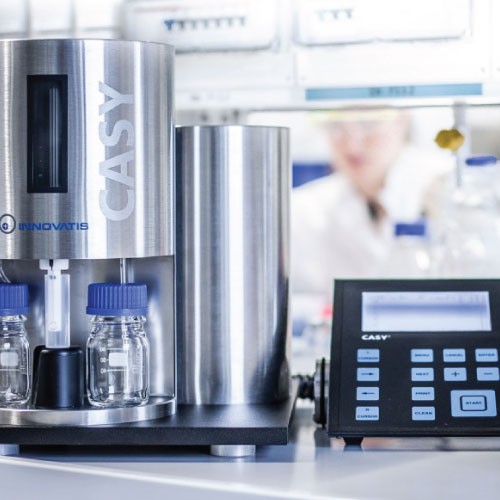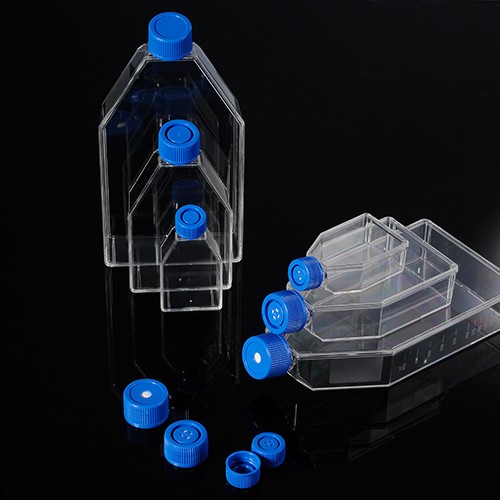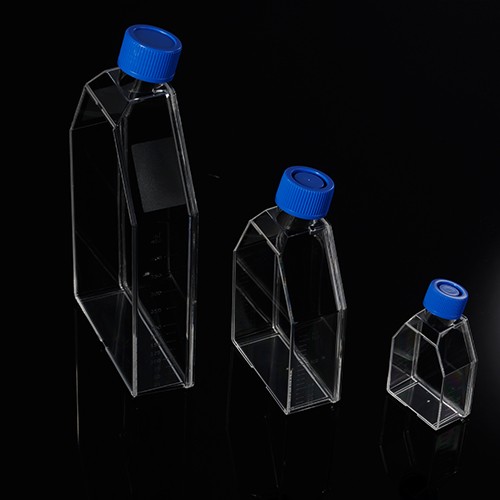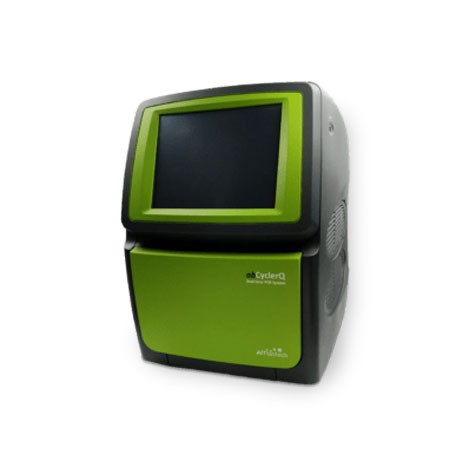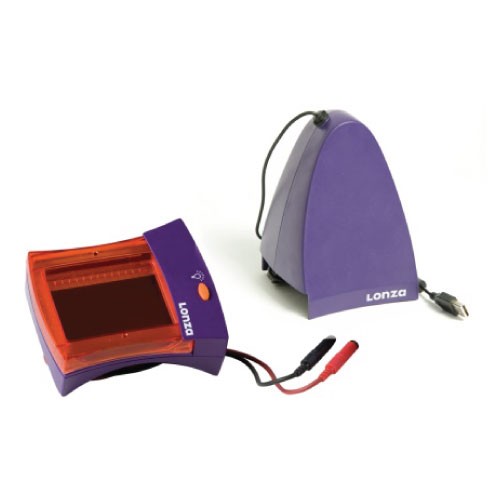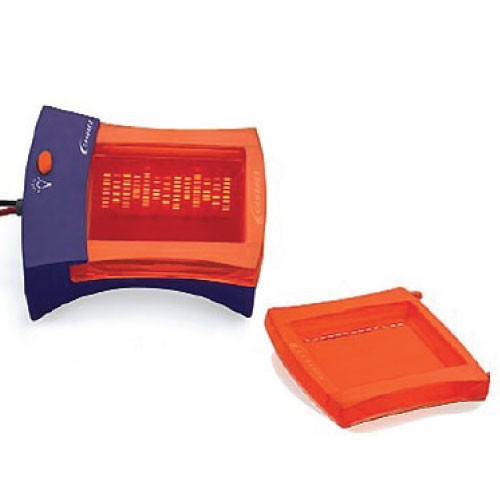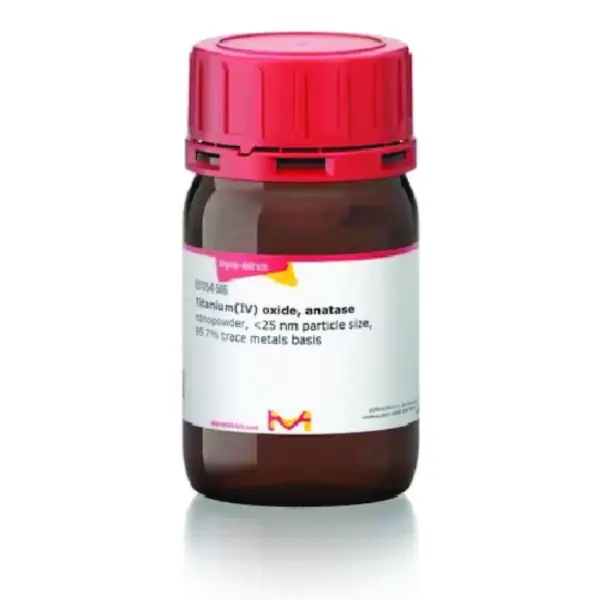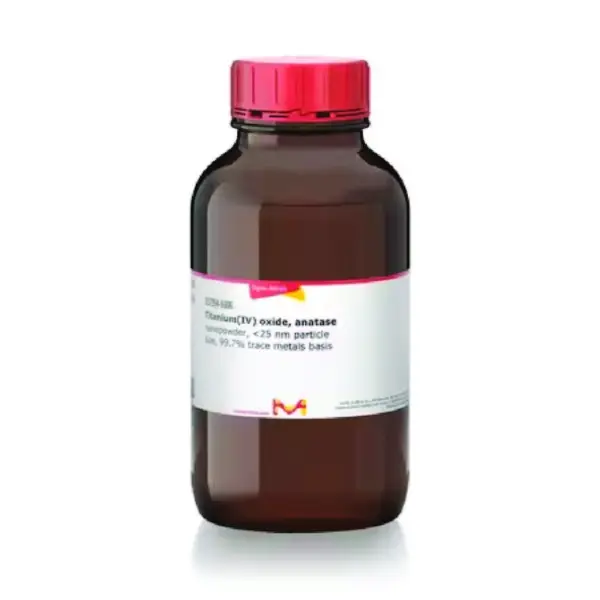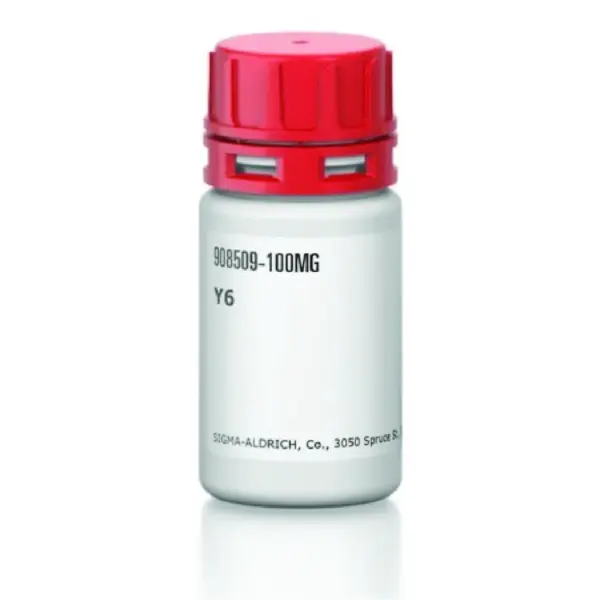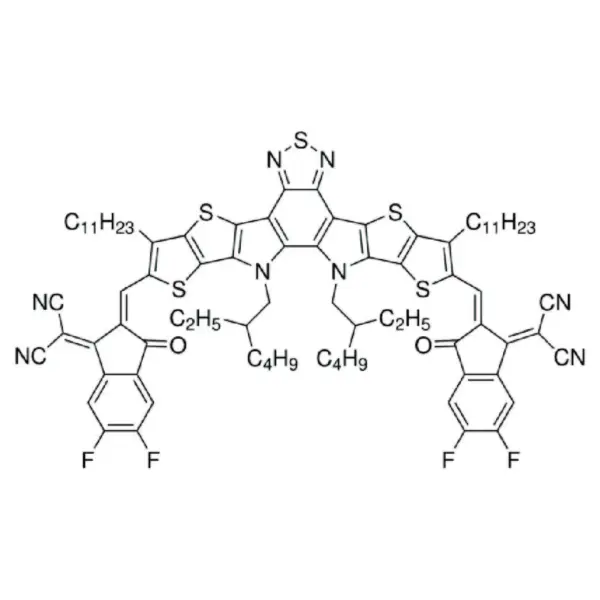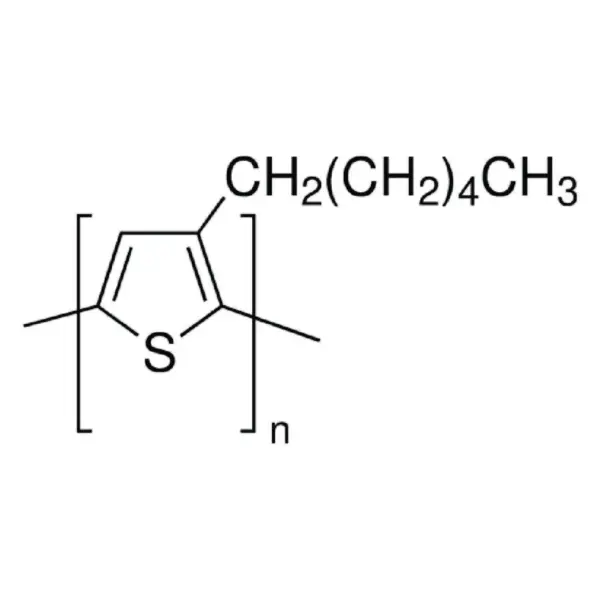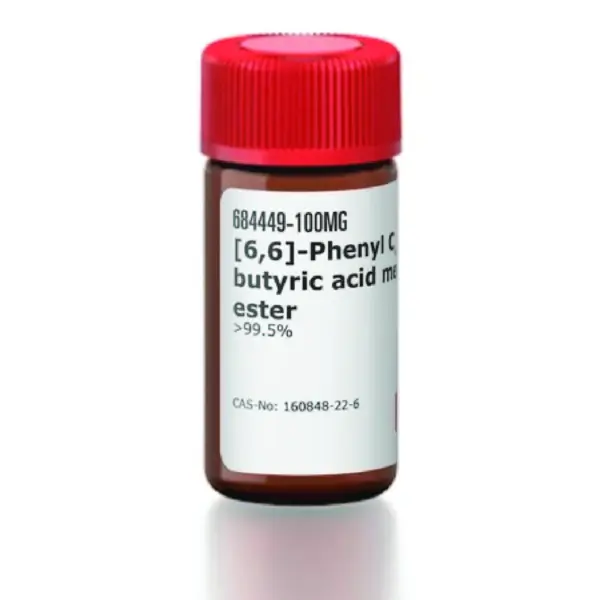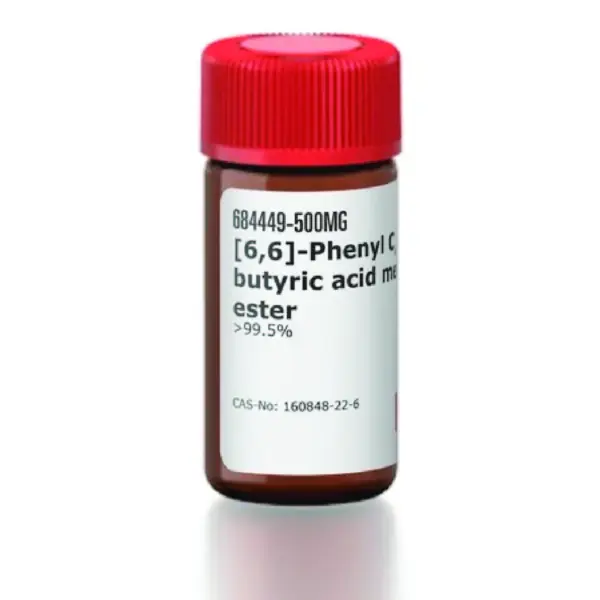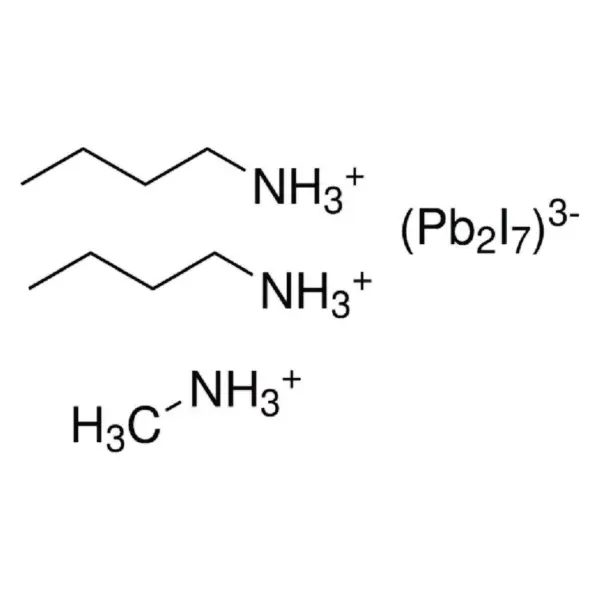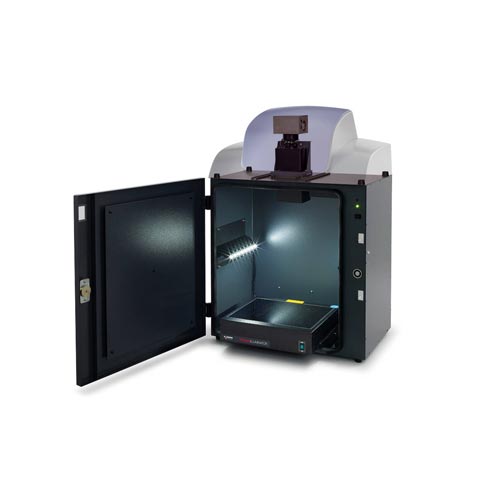
chemiPRO Chemiluminescence Imaging System
Login to see pricesBrand:
Cleaver Scientific
The chemiPRO is our complete solution for chemiluminescence and fluorescent western blot im-aging. Featuring a highly sensitive cooled CCD Camera with high quantum efficiency, for de-tection of picogram level proteins, this system can image both conventional ECL style chemi-luminescence blots and fluorescently tagged proteins of antibodies with the optional fluores-cence module. The free of charge software allows automated imaging of multicolour blots with a simple and user friendly interface. The chemiPRO can also be fitted with a UV transilluminator and filters for nucleic acid stains to make it the ultimate all in one chemi and gel documentation system.
Please contact us for pricing and availability.
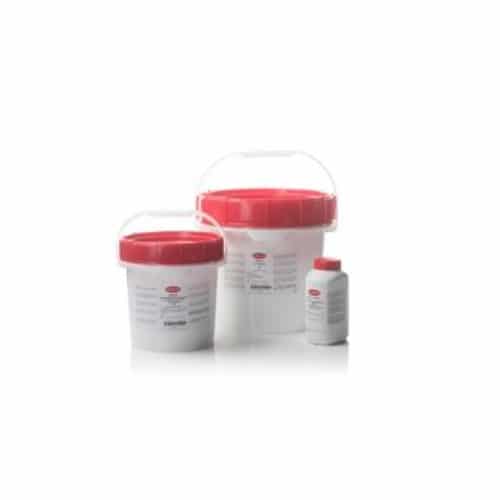
Nutrient Agar 500g, Oxoid
Login to see pricesBrand:
Thermo ScientificTM OxoidTM
Nutrient agar (500g, Oxoid) is a culture media that used to cultivate and isolate fastidious pathogens and other microorganisms. This non-selective medium contains beef extracts combined with peptone, yeast extracts and sodium chloride to provide the nitrogen compounds, carbon, vitamins and some trace ingredients necessary for the growth of bacteria. A general-purpose medium which may be enriched with up to 10% blood or other biological fluid.
Nutrient Agar, Oxoid Composition
| Typical Formula * |
gm/litre
|
| `Lab-Lemco’ powder |
1.0 |
| Yeast extract |
2.0 |
| Peptone |
5.0 |
| Sodium chloride |
5.0 |
| Agar |
15.0 |
| pH 7.4 ± 0.2 @ 25°C |
Nutrient Agar, Oxoid Preparation:
Powder: Suspend 28g of nutrient agar in 1 litre of distilled water. Bring to the boil to dissolve completely. Sterilise by autoclaving at 121°C for 15 minutes.
Storage conditions and Shelf life
Store the dehydrated medium at 10-30°C and use before the expiry date on the label.
Store the prepared medium at 2-8°C.
CASY TT
Login to see pricesBrand:
OMNI Life Science
Description
Cell Counter Analyzer for research labs with high sample throughput and/or GLP certification demanding highest degree of reproducibility
Areas of Application
- Reliable multi-parameter QA on cell cultures at lowest cost
- Simultaneous determination of cell count, size distribution, cell volume, aggregation and cell debris in less than 10 seconds, no dyes used
- Need for highest accuracy and reproducibility, which dye-based methods and systems with autosampler = longer waiting times cannot achieve
Please contact us for pricing and availability.
Cell Culture Flask Biologix
Login to see pricesBrand:
Biologix
This product is currently not available. Please contact us for more information.
Characteristics of cell culture flask, Biologix
● Made of high quality medical grade polystyrene
● Available flask sizes include surface areas of 25 cm2 or 75 cm2
● Plug cap and filter cap options available for all flask sizes
● Plug caps completely isolate the culture from the outside environment
● Filter caps prevent cross-contamination while meeting the requirements for gas exchange
● Short, wide, angled neck design for easy access
● Gamma radiation sterilized
● Non-pyrogenic, non-cyotoxic
● DNase & RNase free, human DNA free
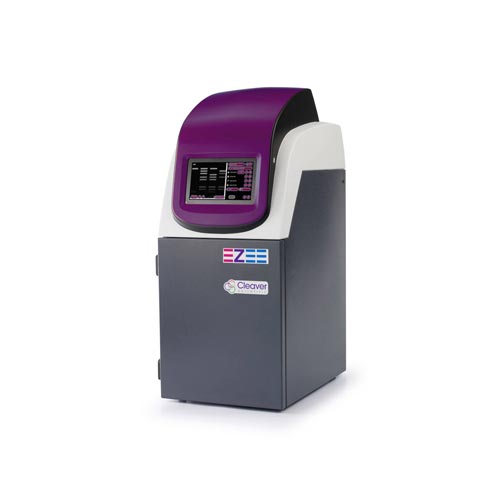
gelONE Gel Documentation System with built in touch screen
Login to see pricesBrand:
Cleaver Scientific
The gelONE is the ultimate in simplicity, with automated acquisition through an intuitive touch screen interface. Compatible with both traditional DNA stains and safe stains, the gelONE is suitable for any lab. 5 Megapixel camera gives excellent low light sensitivity for clear resolution of closely spaced DNA bands and ensures even low levels of fluorescence are detected. The 20 x 24 cm imaging area means even large gels can be imaged with ease. Images are captured using the built in software, and saved direct to USB memory stocks for transfer to PC. The geneQUANT advanced image analysis package is included with all systems license free.
Key application includes:
DNA – Image Agarose gels stained with EtBr, SYBR stains and runSAFE
AutoRads – the gelONE™ high resolution camera makes it ideal for capturing Autorads
Visible Light – Image Coomassie stained gels, tissues, slides and films
Product Includes: gelONE Imaging System, UV Transilluminator, UV filter, software USB with gelQUANT software, power cable and Instruction manuals
Please contact us for pricing and availability.
abCyclerQ
Login to see pricesBrand:
AITbiotech
The abCyclerQ is a powerful tool used to perform rapid and precise real-time polymerase chain reaction (RT-PCR). This six-channel (5 fluorescence colours and 1 FRET channel) real-time PCR instrument combines advanced optical technology with precise temperature control to deliver reliable detection for both single and multiplex real-time PCR assays.
Features
Please contact us for pricing and availability.
FlashGel™ DNA System
Login to see pricesBrand:
Lonza
Description
5 minute DNA analysis
The FlashGel™ System is the fastest way to separate DNA and the only way to watch DNA migration as it happens. This revolutionary new tool separates DNA in 2 – 7 minutes. Monitor gel runs right at the bench, without UV light. The highly sensitive system allows a 5-20X reduction in DNA levels – saving both time and money.
Please contact us for pricing and availability.
Titanium dioxide, anatase, nanopowder, <25 nm particle size, 99.7% trace metals basis - Sigma-Aldrich
Login to see pricesBrand:
Sigma-Aldrich
Synonyms
Nanotitania, TiO₂ anatase, TiO2 nanopowder, Titania, Titanium(IV) oxide, anatase, Titanium dioxide
CAS No
1317-70-0
General Description
Our titanium(IV) oxide, anatase nanopowder is a fine white powder composed of titanium dioxide nanoparticles with a particle size less than 25 nm. Anatase is a metastable polymorph of TiO2, which is less hard and less dense than the rutile polymorph. Optically, anatase nanopowder has a lower refractive index, absorbs less UV light, and exhibits greater photocatalytic activity than the rutile polymorph. Consequently, anatase is often preferred in applications where photocatalytic activity is desired, such as self-cleaning surfaces and solar cells.
Application
Titania paste may be used as a transparent coating for self cleaning glass. Low optical scattering titania-acrylate nanocomposites have been reported. Metal contacts in solar cells based on titanium dioxide and di-(isothiocyanate)-bis-(2,2′-bipyridyl-4,4′-dicarboxylate)ruthenium(II) have been studied.
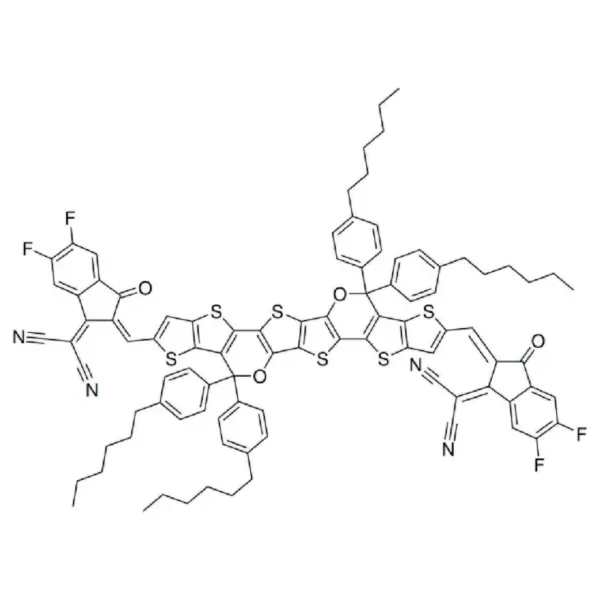
COi8DFIC – Sigma-Aldrich
Login to see pricesBrand:
Sigma-Aldrich
Synonyms
2,2′-[[4,4,11,11-tetrakis(4-hexylphenyl)-4,11-dihydrothieno[2′,3′:4,5]thieno[2,3-d]thieno[2′′′′,3′′′′:4′′′,5′′′]thieno[2′′′,3′′′:4′′,5′′]pyrano[2′′,3′′:4′,5′]thieno[2′,3′:4,5]thieno[3,2-b]pyran-2,9-diyl]bis[methylidyne(5,6-difluoro, NFA146, O6T-4F, PCE146
CAS No
2184266-44-0
General Description
COi8DFIC or O6T-4F is a highly efficient, n-type, low-bandgap nonfullerene acceptor with strong NIR absorption.
In a recent study, COi8DFIC or O6T-4F was selected in a Tandem cell by computer assited design and gave a record PCE of 17.3∃% for fabricated organic solar cells.
COi8DFIC or O6T-4F is frequently selected to blend with a narrow-bandgap donor material and another narrow bandgap acceptor material to fabricate ternary organic solar cells. The PTB7-Th:COi8DFIC:PC71BM ternary cells offered a PCE of 14.08%. By further adopting a post-annealing process, an outstanding PCE of 14.62% can be achieved. Furthermore, the device utilizing COi8DFIC exhibited a good thermal stability with PCEs over 13.5% in a wide temperature range (70–160 °C).
Application
COi8DFIC is primarily utilized as a non-fullerene acceptor in OPV devices. It exhibits a broad absorption spectrum, enabling it to absorb light across a wide range of wavelengths, including the visible and near-infrared regions. This property allows for efficient utilization of a broader range of solar radiation, enhancing the light-harvesting capability of the OPV device. COi8DFIC can be employed as the electron transport material in OFET devices.
COi8DFIC or O6T-4F is a highly efficient, n-type, low-bandgap nonfullerene acceptor with strong NIR absorption
In a recent study, COi8DFIC or O6T-4F was selected in a Tandem cell by computer assited design and gave a record PCE of 17.3% for fabricated organic solar cells.
Tandem Cell Device performance:
ITO/ZnO/PFN-Br/PBDB-T:F-M/M-PEDOT/ZnO/PTB7- Th:O6T-4F:PC71BM/MoO3/Ag
Voc=1.642 V
Jsc=14.35 mA/cm2
FF=73.7%
PCE=17.3%
COi8DFIC or O6T-4F is frequently selected to blend with a narrow-bandgap donor material and another narrow bandgap acceptor material to fabricate ternary organic solar cells. The PTB7-Th:COi8DFIC:PC71BM ternary cells offered a PCE of 14.08%. By further adopting a post-annealing process, an outstanding PCE of 14.62% can be achieved. Furthermore, the device utilizing COi8DFIC exhibited a good thermal stability with PCEs over 13.5% in a wide temperature range (70-160 °C).
Device structure:
ITO/ZnO/PTB7-Th:COi8DFIC:PC71BM/MoO3/Ag
Before annealing
Voc=0.702 V
Jsc=27.74 mA/cm2
FF=0.701
PCE=13.65%
After annealing at 80°C
Voc=0.727 V
Jsc=27.39 mA/cm2
FF=0.734
PCE=14.62%
COi8DFIC, an efficient non-fullerene acceptor material, has a strong near-infrared range (NIR) light absorption. It can be used as an n-type small molecule acceptor material for the fabrication of polymeric solar cells.
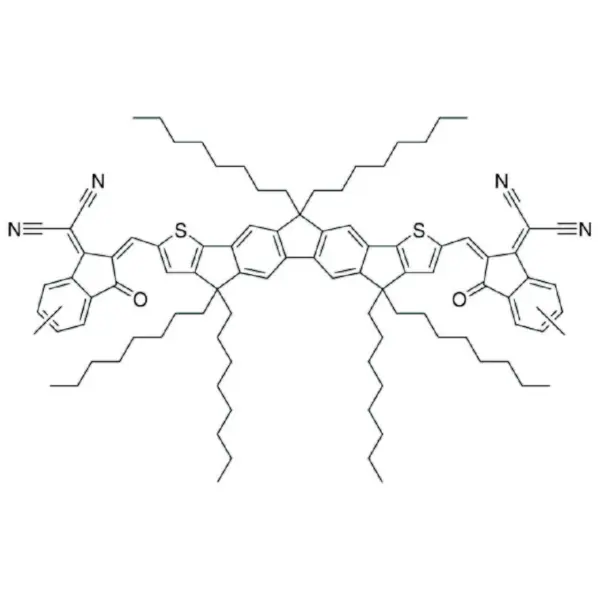
F-M – Sigma-Aldrich
Login to see pricesBrand:
Sigma-Aldrich
Synonyms
4,4,7,7,12,12-octyl-7,12-dihydro- bis[methylidyne(3-oxo-methyl-1H indene-2,1(3H)-diylidene)]]bis-4H-thieno[2″,3″:1′,2′]indeno[5′,6′:5,6]-s-indaceno[1,2-b]thiophene, FTIC-C8C8M
CAS No
2239303-91-2
General Description
Non-fullerene acceptors (NFAs) are currently a major focus of research in the development of bulk-heterojunction organic solar cells (OSCs). In contrast to the widely used fullerene acceptors (FAs), the optical properties and electronic energy levels of NFAs can be designed and readily tuned. NFA-based OSCs can also achieve greater thermal stability and photochemical stability, as well as longer device lifetimes, than their FA-based counterparts. Recent developments have led to a rapid increase in power conversion efficiencies for NFA OSCs, with values now exceeding 15% in a single junction cell, and >17% for a tandem cell, demonstrating the viability of using NFAs to replace FAs in next-generation high-performance OSCs.
Application
F-M is a non-fullerene acceptor that absorbs visible light, when used in a front cell paired with NIR absorbing rear cell, the resulted tandem organic solar cell gave a record energy conversion efficiency of 17.3%.[1]
Tandem Cell Device performance:
ITO/ZnO/PFN-Br/PBDB-T:F-M/M-PEDOT/ZnO/PTB7- Th:O6T-4F:PC71BM/MoO3/Ag
Voc=1.642 V
Jsc=14.35 mA/cm2
FF=73.7%
PCE=17.3%
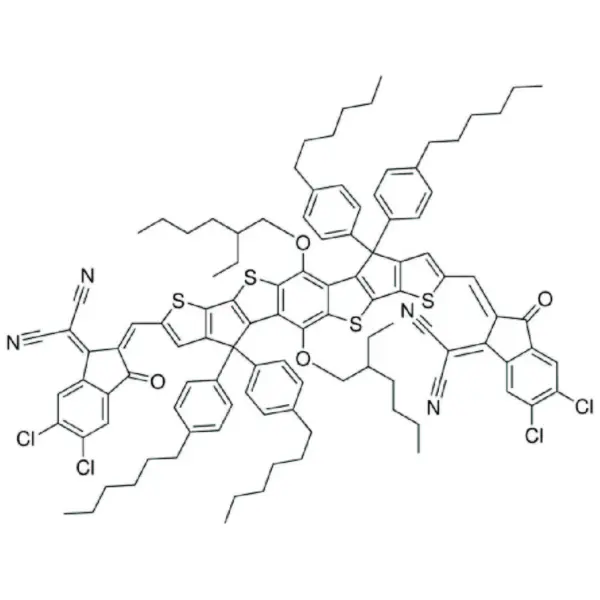
BT-CIC – Sigma-Aldrich
Login to see pricesBrand:
Sigma-Aldrich
Synonyms
4,4,10,10-tetrakis(4-hexylphenyl)-5,11-(2-ethylhexyloxy)-4,10-dihydrodithienyl[1,2-b:4,5b′ ]benzodithiophene-2,8-diyl)bis(2-(3-oxo-2,3-dihydroinden-5,6-dichloro-1-ylidene)malononitrile), NFA147, PCE147
CAS No
2197167-51-2
General Description
BT-CIC is a highly efficient, ultra-narrow bandgap, NIR absorbing, non-fullerene acceptor, designed to use in high performance organic photovoltaic devices.
A recently reported tandem cell, employing BT-CIC as the non-fullerene acceptor and PCE-10 as donor for the back cell showed an PCE of 15%.
Device performance:
Tandem [Front] (170 nm DTDCPB:C70 + ARC) [Back]PCE-10:BTCIC (1:1.5, 75 nm)
Jsc=13.3 ± 0.3 mA/cm2
Voc=1.59 ± 0.01 V
FF=0.71± 0.01
PCE=15.0% ± 0.3%
ARC: an antireflection coating
Non fullerene acceptor Y6 – Sigma-Aldrich
Login to see pricesBrand:
Sigma-Aldrich
Synonyms
BTP-4F, Y6, PCE 157
CAS No
2304444-49-1
General Description
Non-fullerene acceptors (NFAs) are currently a major focus of research in the development of bulk-heterojunction organic solar cells (OSCs). In contrast to the widely used fullerene acceptors (FAs), the optical properties and electronic energy levels of NFAs can be designed and readily tuned. NFA-based OSCs can also achieve greater thermal stability and photochemical stability, as well as longer device lifetimes, than their FA-based counterparts.Recent developments have led to a rapid increase in power conversion efficiencies for NFA OSCs, with values now exceeding 15% in a single junction cell, and >17% for a tandem cell, demonstrating the viability of using NFAs to replace FAs in next-generation high-performance OSCs.
Y6 is a non-fullerene acceptor-donor-acceptor (A-D-A) type small molecular acceptor (SMA) with flexible alkyl chains and a centrally fused ring. It has a ladder-type electron-deficient core, which can be blended with PM6 for organic photovoltaic applications.
Applications
Y6 is a non-fullerene acceptor (NFA) that uses an electron-deficient molecular core to obtain a low band gap with improved electron affinity. OPV devices made from Y6 can reach exceptionally high performances in single-junction devices, with a maximum PCE reported of 15.7% (14.9% certified by Enli Tech Laboratory) when paired with PM6. Y6 is versatile and can be employed in both conventional and inverted OPV device architectures and can maintain a high PCE with varying active layer thicknesses (13.6% in thick 300 nm layers).
Y6 is used as an electron acceptor material in organic solar cells. It has shown promising results in improving the power conversion efficiency of organic solar cells. Y6 and its derivatives are also used in material engineering studies to understand the relationships between molecular structure, morphology and device performance in organic photovoltaics.
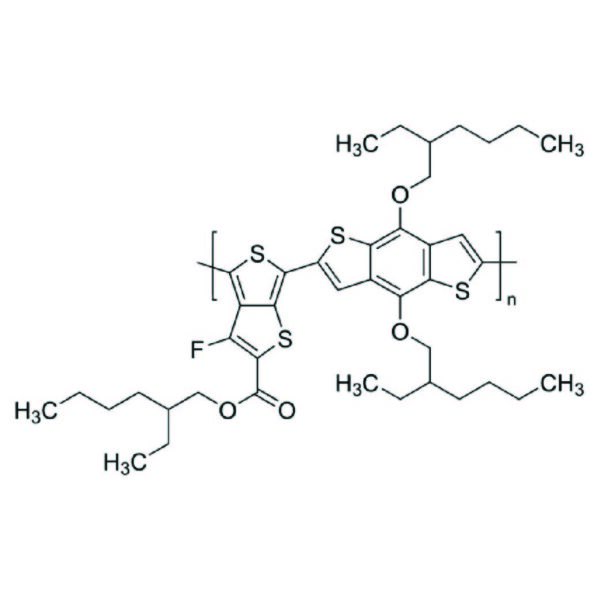
PTB7, average Mw 80,000-200,000, PDI ≤3.0 – Sigma-Aldrich
Login to see pricesBrand:
Sigma-Aldrich
Synonyms
Poly({4,8-bis[(2-ethylhexyl)oxy]benzo[1,2-b:4,5-b′]dithiophene-2,6-diyl}{3-fluoro-2-[(2-ethylhexyl)carbonyl]thieno[3,4-b]thiophenediyl})
General Description
PTB7 is a semiconducting polymer used in organic photovoltaics with an energy efficiency of 9.15%. It can act as an electron donor with narrow optical band gaps and excellent π-π conjugation while forming a nanocomposite with fullerenes.[1][2]
We are committed to bringing you Greener Alternative Products, which adhere to one or more of The 12 Principles of Greener Chemistry. This product belongs to enabling category of greener alternatives thus aligns with “Design for energy efficency”. Hole transport organic materials allow perfect energy level alignment with the absorber layer and therefore efficient charge collection, are prone to degradation in ambient conditions.
Applications
OPV Device Structure: ITO/PEDOT:PSS/PTB7 :PC71BM/Ca/Al
- JSC = 14.9 mA/cm2
- VOC = 0.75 V
- FF = 0.69
- PCE = 7.4%
Poly(3-hexylthiophene-2,5-diyl) – Sigma-Aldrich
Login to see pricesBrand:
Sigma-Aldrich
Synonyms
P3HT
General Description
Poly(3-hexylthiophene) (P3HT) is a regioregular semiconducting polymer. It is used in organic electronics primarily because of its regular end-to-end arrangement of side chain, which allows efficient p- p stacking of the conjugated backbones. On account of the alkyl side group, P3HT is rendered hydrophobic in neutral state. Solution-to-solid phase transformation and thin film formation of poly(3-hexylthiophene) (P3HT) was reported in a study.
Poly(3-hexylthiophene-2,5-diyl) (P3HT) is a poly(alkylthiophene) based semiconducting polymer that is hydrophobic at neutral state and has π-π conjugation in its backbone. It has a hole mobility is in the range of 10-3-10-1 cm2V-1s-1 and is commonly used in the development of field-effect transistors (FETs) for a wide range of applications.
We are committed to bringing you Greener Alternative Products, which adhere to one or more of The 12 Principles of Greener Chemistry. This product belongs to Enabling category of greener alternatives thus aligns with “Design for energy efficency”. Hole transport organic materials allow perfect energy level alignment with the absorber layer and therefore efficient charge collection, are prone to degradation in ambient conditions.
Applications
For the characterization and solid-state properties of this polymer, see J. Am. Chem. Soc. .
P3HT, an electron donor that acts as a semiconducting active layer in combination with an electron acceptor like fullerene derivative (6,6)-phenyl C61-butyric acid methylester (PCBM), can be used to fabricate bulk heterojunction (HJT) based organic solar cells (OSCs).[4][5][6][7] Volatile organic compounds (VOCs) and electric sensor devices can be developed by using Langmuir-Schaefer (LS) films of P3HT and poly(3-octylthiophene)(P3OT). It can also be used with polystyrene to process a nano-scaled polymeric coating through spray coating onto carbon nanotube (CNT) powders.
Poly(3-hexylthiophene-2,5-diyl) may be used to fabricate ZnO nanowire arrays based photodiode. Regio- regular poly(3-hexylthiophene-2,5-diyl) may find extensive use as a semiconducting layer in organic thin film field effect transistor (FETs).
Rechargeable battery electrodes, electrochromic devices, chemical and optical sensors, light-emitting diodes, microelectrical amplifiers, field-effect transistors and non-linear optical materials.
Features & Benefits
Greater than 90% head-to-tail regiospecific conformation.
Good processibility, environmental stability and electroactivity.
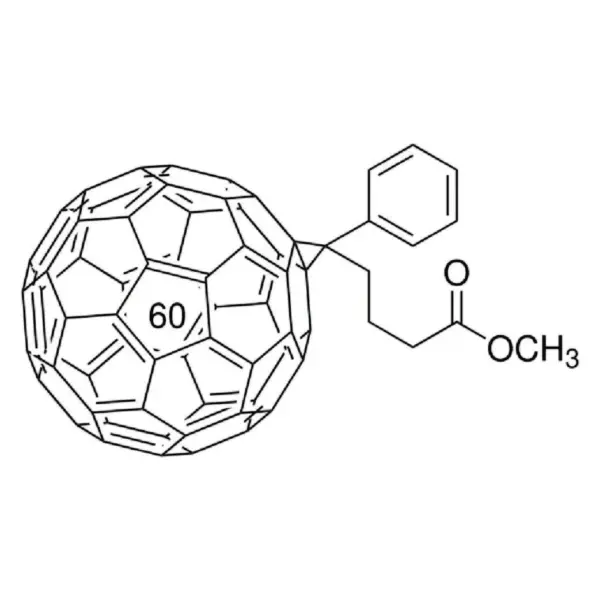
[6,6]-Phenyl C61 butyric acid methyl ester (684457) – Sigma-Aldrich
Login to see pricesBrand:
Sigma-Aldrich
Synonyms
1-[3-(Methoxycarbonyl)propyl]-1-phenyl-[6.6]C61, 3′H-Cyclopropa[1,9] [5,6]fullerene-C60-Ih-3′-butanoic acid 3′-phenyl methyl ester, PCBM, [60]PCBM
General Description
[6,6]-Phenyl C61 butyric acid methyl ester ([60]PCBM) is a methanofullerene that has a better solubility in organic solvents than fullerenes(C60). It has high electron mobility, which enables its function as an electron acceptor in electrochemical applications.
Applications
Soluble n-channel organic semiconductor. For use as an n-type layer in plastic electronics, especially bulk heterojunction OFETs and photovoltaic cells (PVs).
[60]PCBM is an n-type semi-conductor widely used as an electron transport material with low cost and high surface area in different energy based applications like organic photovoltaics (OPVs), perovskite solar cells (PSCs), field effect transistors (FETs) and photodetectors

[6,6]-Phenyl C61 butyric acid methyl ester (684430) – Sigma-Aldrich
Login to see pricesBrand:
Sigma-Aldrich
Synonyms
1-[3-(Methoxycarbonyl)propyl]-1-phenyl-[6.6]C61, 3′H-Cyclopropa[1,9] [5,6]fullerene-C60-Ih-3′-butanoic acid 3′-phenyl methyl ester, PCBM, [60]PCBM
General Description
[6,6]-Phenyl C61 butyric acid methyl ester ([60]PCBM) is a methanofullerene that has a better diffusion in organic molecules than fullerenes(C60). It has high electron mobility which allows it to be used as an electron acceptor in major electrochemical applications.
Applications
Soluble n-channel organic semiconductor. For use as an n-type layer in plastic electronics, especially bulk heterojunction OFETs and photovoltaic cells (PVs).
[60]PCBM is an n-type semi-conductor widely used as an a electron transport material with low cost and high surface area in different energy based applications like organic photovoltaics (OPVs), perovskite solar cells (PSCs), organic field effect transistors (OFETs) and photodetectors
[6,6]-Phenyl C61 butyric acid methyl ester (684449) – Sigma-Aldrich
Login to see pricesBrand:
Sigma-Aldrich
Synonyms
1-[3-(Methoxycarbonyl)propyl]-1-phenyl-[6.6]C61, 3′H-Cyclopropa[1,9] [5,6]fullerene-C60-Ih-3′-butanoic acid 3′-phenyl methyl ester, PCBM, [60]PCBM
General Description
(6,6)-Phenyl C61 butyric acid methyl ester ((60) PCBM) is a methanofullerene that has a better diffusion in organic molecules than fullerenes (C60). It has a high electron mobility which allows it to be used as an electron acceptor in major electrochemical applications.
Applications
(60)PCBM is an n-type semi-conductor widely used as an a electron transport material with low cost and high surface area in different energy based applications like organic photovoltaics, perovskite solar cells, field effect transistors and photodetectors.
Soluble n-channel organic semiconductor. For use as an n-type layer in plastic electronics, especially bulk heterojunction OFETs and photovoltaic cells (PVs).
[60]PCBM is an n-type semi-conductor with low cost and high surface area. It is widely used as an electron transport material in various energy-based applications like organic photovoltaics, perovskite solar cells, field effect transistors, and photodetectors.
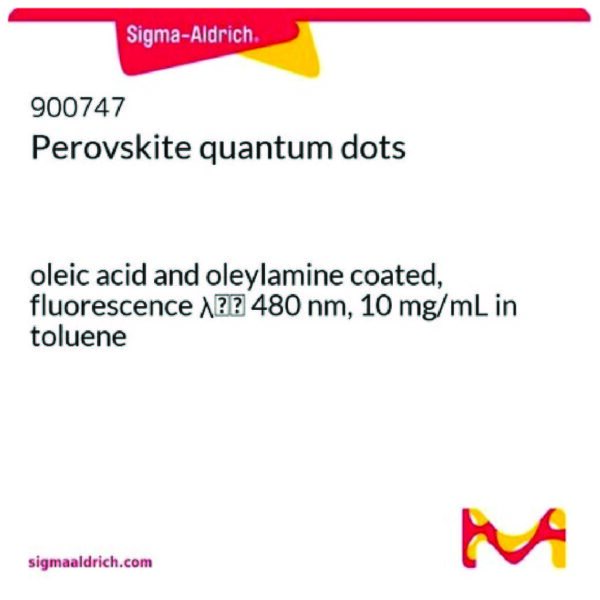
Perovskite quantum dots oleic acid and oleylamine coated, fluorescence λem 480 nm, 10 mg/mL in toluene – Sigma-Aldrich
Login to see pricesBrand:
Sigma-Aldrich
Synonyms
Cadmium free QDs, Fluorescent nanocrystals, Perovskite nanocrystals, QDs
Applications
For Perovskite quantum dots:
Perovskite quantum dots (QDs) of common formula CsPbX3 (X = Cl, Br, I) possess high photoluminescence efficiency and narrow emission and emit in the visible spectral regime. Perovskite QDs are cadmium free and the aforementioned properties render them suitable for applications in light emitting diodes (LEDs), lasers, liquid crystal displays (LCDs) etc.
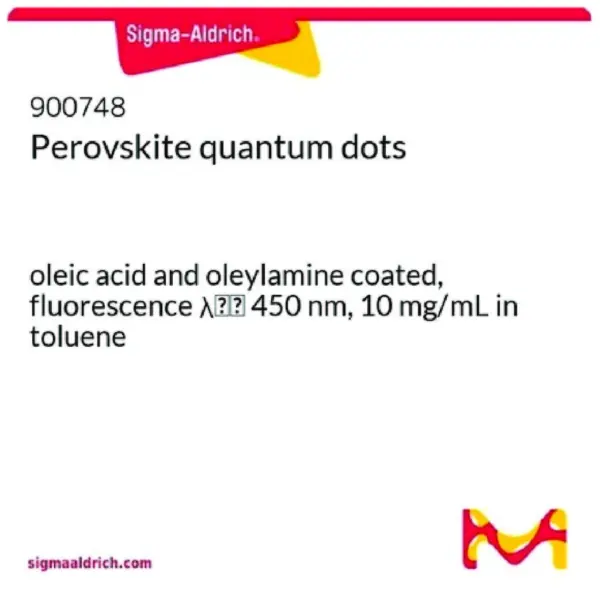
Perovskite quantum dots oleic acid and oleylamine coated, fluorescence λem 450 nm, 10 mg/mL in toluene – Sigma-Aldrich
Login to see pricesBrand:
Sigma-Aldrich
Synonyms
Cadmium free QDs, Fluorescent nanocrystals, Perovskite nanocrystals, QDs
Applications
For Perovskite quantum dots:
Perovskite quantum dots (QDs) of common formula CsPbX3 (X = Cl, Br, I) possess high photoluminescence efficiency and narrow emission and emit in the visible spectral regime. Perovskite QDs are cadmium free and the aforementioned properties render them suitable for applications in light emitting diodes (LEDs), lasers, liquid crystal displays (LCDs) etc.
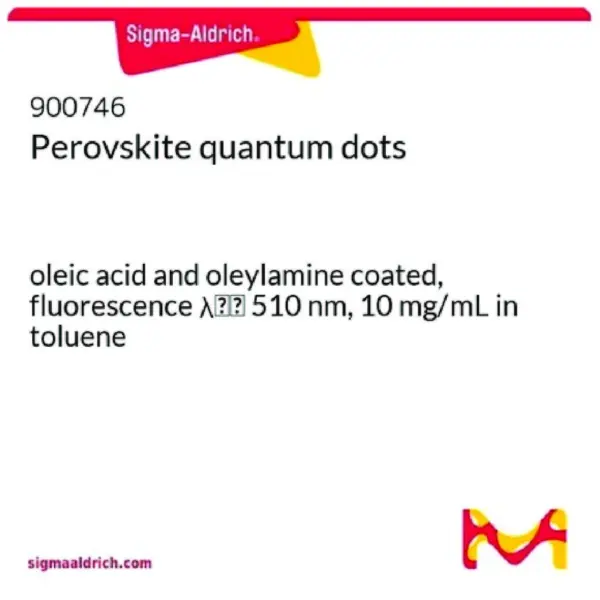
Perovskite quantum dots oleic acid and oleylamine coated, fluorescence λem 510 nm, 10 mg/mL in toluene – Sigma-Aldrich
Login to see pricesBrand:
Sigma-Aldrich
Synonyms
Cadmium free QDs, Fluorescent nanocrystals, Perovskite nanocrystals, QDs
Applications
For Perovskite quantum dots:
Perovskite quantum dots (QDs) of common formula CsPbX3 (X = Cl, Br, I) possess high photoluminescence efficiency and narrow emission and emit in the visible spectral regime. Perovskite QDs are cadmium free and the aforementioned properties render them suitable for applications in light emitting diodes (LEDs), lasers, liquid crystal displays (LCDs) etc.
di-n-butylammonium methylammonium lead(II) heptaiodide – Sigma-Aldrich
Login to see pricesBrand:
Sigma-Aldrich
Synonyms
(BA)2(MA)Pb2I7, 2D perovskite, Bis(butylammonium) methylammonium heptaiododiplumbate
General Description
We are committed to bringing you Greener Alternative Products, which adhere to one or more of The 12 Principles of Greener Chemistry. This product has been enhanced for “Energy efficiency”.
Applications
2D perovskites have been used as the active material in may applications such as light emmiting diodes,[1] phototransistors,[2] and solar cells.[3] Unlike 3D perovskites, these layered materials give higher moisture stability and longer device lifetimes.
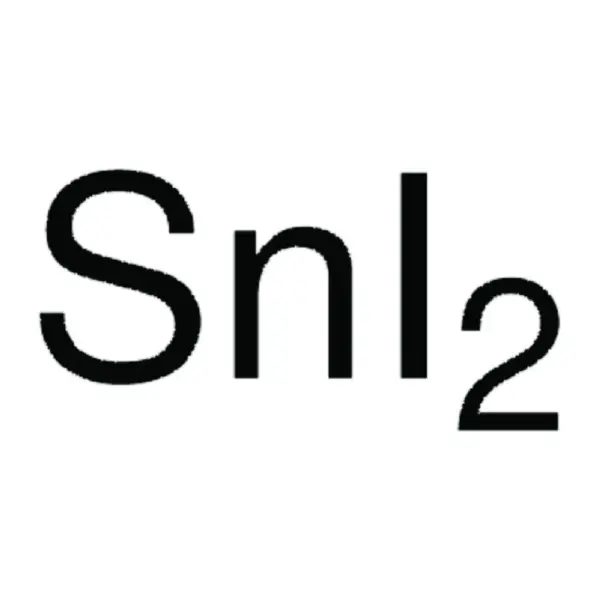
Tin(II) iodide, AnhydroBeads™, −10 mesh, 99.99% trace metals basis (Sigma-Aldrich)
Login to see pricesBrand:
Sigma-Aldrich
Synonyms
Stannous iodide, Tin diiodide
General Description
Tin(II) iodide AnhydroBeads™−10 mesh, 99.99% trace metals basis, comes as beads with red to purple in colour with applications in semiconductor research, solar cells, material science, chemical synthesis, catalysis, and photonics. Tin (II) iodide is widely used as a precursor to prepare lead-free, non-toxic hybrid perovskite materials. Tin-based perovskites show excellent electrical and optical properties such as high charge carrier mobility, absorption coefficient, and small exciton binding energies.
Applications
Tin(II) iodide (SnI₂) is a versatile compound with a range of applications in research, particularly in semiconductor technology, solar cells, chemical synthesis, catalysis, etc. SnI₂ is used in perovskite solar cells as a precursor for tin-based perovskites or as an additive to improve device stability and performance. The addition of a small amount of 2D tin film induces well-defined orientation and superior crystallinity in formamidinium tin iodide (FASnI3) films. This results in the longer life of charge carriers and improves the performance of the hybrid perovskite solar cell (HPSC). It can also be used to prepare solution-processable lamellar hybrid
[CH3(CH2)11NH3]SnI3semiconductor.Its catalytic properties can be leveraged to develop new synthetic methodologies such as reductions, cyclisations, and coupling reactions. It is suitable to be use in photonic applications, including sensors and photovoltaic devices. It is used as a deposition material for preparing thin films for use in electronic and optoelectronic devices. Techniques like chemical vapour deposition (CVD) and physical vapour deposition (PVD) are explored for creating high-quality films. In a study, it is found that when a novel catalytic system comprised of tin sulfide (SnS) nanoflakes as a solid catalyst and tin iodide (SnI2) as a dual-functional electrolyte additive, the Li-air battery enables operating at high current rates up to 10 000 mA g−1 (corresponding to 1 mA cm−2). Also it has been observed that that the role of the SnI2 is not only reacting with the lithium anode to provide protection but reducing the charge potential by promoting catalytic decomposition of the Li2O2.
Features & Benefits
Tin(II) iodide AnhydroBeads™, −10 mesh, 99.99% trace metals basis is designed and tested under stringent dry manufacturing conditions to ensure low water content, trace metal purity of 99.99%, and low surface area-to-volume ratio. The salt possesses excellent electrical and optical properties such as high charge carrier mobility, absorption coefficient, and small exciton binding energies. The advantages of our AnhydroBeads™ salts are as follows:
1) Reduced uptake rate of environmental moisture minimises caking, dusting, and static buildup for repeated easy handling.
2) Higher crucible packing densities and lower volatility in high-temperature solid-state procedures.
3) Easier pneumatic loading of salts to sample chambers due to fewer clogging issues associated with powdered salt counterparts.
Legal Information
AnhydroBeads is a trademark of Sigma-Aldrich Co. LLC
| CAS Number |
10294-70-9 |
| Empirical Formula |
SnI2 |
| Molecular Weight |
372.52 |
| Reaction suitability |
Core: Tin |
| Assay |
99.99% trace metals basis |
| Impurities |
≤150.0 ppm Trace Metal Analysis |
| Particle size |
−10 mesh |
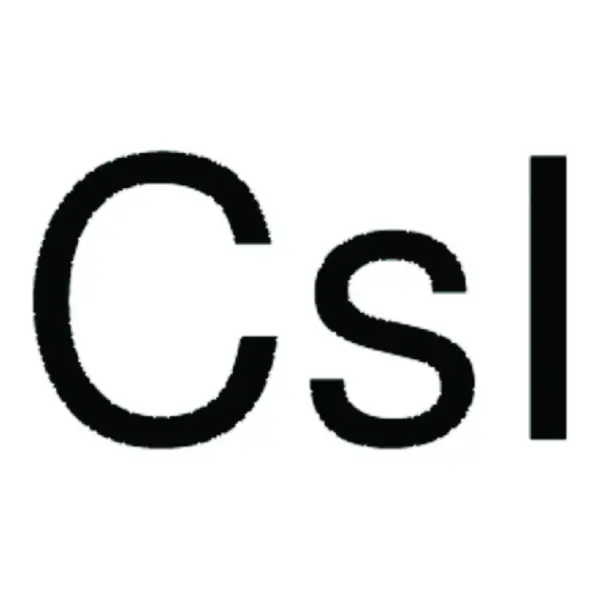
Cesium iodide, 99.999% trace metals basis – Sigma-Aldrich
Login to see pricesBrand:
Sigma-Aldrich
Synonyms
Caesium iodide, Caesium monoiodide
Applications
Cesium iodide can be used as precursor to synthesize lead-free perovskite material, Cs2NaBiI6 (CNBI). The CNBI is highly stable and finds application in the field of solar cells, LEDs, and lasers.
It can be used to prepare brightest red emitting Cs2HfI6 scintillator which is applicable in high resolution gamma spectroscopy.
It can also be used tosynthesize Cesium based nanocrystals for the detection of ionizingradiations.
Features & Benefits
- High quantum efficiency
- High stability to ambient air and gas environment
Frequently used in devices such as phosphor screens for medical imaging, scintillators, calorimeters and a variety of particle detectors.
| CAS Number |
7789-17-5 |
| Empirical Formula |
CsI |
| Molecular Weight |
259.81 |
| Form |
Solid |
| Assay |
99.999% trace metals basis |
| Impurities |
≤15.0 ppm Trace Metal Analysis |
| Application(s) |
solar cells, LEDs, and lasers |

Cesium Iodide, AnhydroBeads™, 99.999% trace metals basis (Perovskite grade) – Sigma Aldrich
Login to see pricesBrand:
Sigma-Aldrich
Synonyms
Cesium monoiodide
General Description
Cesium iodide anhydrous can be used as a precursor or component in the synthesis of the perovskite absorber layer in perovskite solar cells. By introducing cesium iodide into the perovskite composition, the bandgap of the material can be tuned to better match the solar spectrum, optimizing the light absorption and energy conversion efficiency of the solar cell.
Cesium iodide finds application in synthesis of perovksites based photovoltaic materials. Our perovskite grade CsI can readily be dissolved in 1:1 vol DMF/DMSO to yield 1M solution.
Features & Benefits
Frequently used in devices such as phosphor screens for medical imaging, scintillators, calorimeters and a variety of particle detectors.
Packing
Packaged in ampules
Legal Information
AnhydroBeads is a trademark of Sigma-Aldrich Co. LLC
| CAS Number |
7789-17-5 |
| Empirical Formula |
CsI |
| Molecular Weight |
259.81 |
| Product line |
AnhydroBeads™ |
| Assay |
99.999% trace metals basis |
| Form |
crystals |
| Particle size |
~10 mesh |


